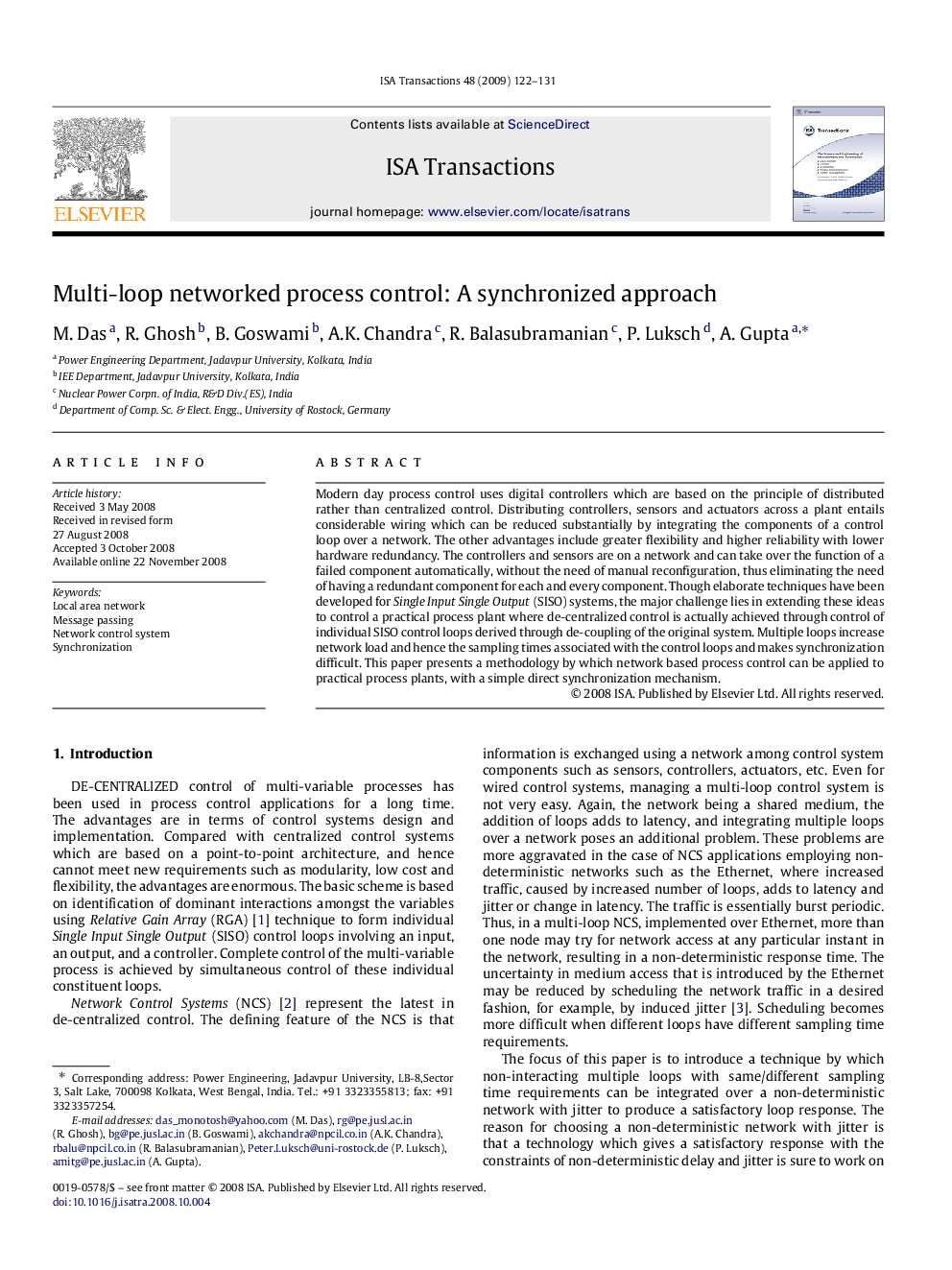| Article ID | Journal | Published Year | Pages | File Type |
|---|---|---|---|---|
| 5005440 | ISA Transactions | 2009 | 10 Pages |
Abstract
Modern day process control uses digital controllers which are based on the principle of distributed rather than centralized control. Distributing controllers, sensors and actuators across a plant entails considerable wiring which can be reduced substantially by integrating the components of a control loop over a network. The other advantages include greater flexibility and higher reliability with lower hardware redundancy. The controllers and sensors are on a network and can take over the function of a failed component automatically, without the need of manual reconfiguration, thus eliminating the need of having a redundant component for each and every component. Though elaborate techniques have been developed for Single Input Single Output (SISO) systems, the major challenge lies in extending these ideas to control a practical process plant where de-centralized control is actually achieved through control of individual SISO control loops derived through de-coupling of the original system. Multiple loops increase network load and hence the sampling times associated with the control loops and makes synchronization difficult. This paper presents a methodology by which network based process control can be applied to practical process plants, with a simple direct synchronization mechanism.
Related Topics
Physical Sciences and Engineering
Engineering
Control and Systems Engineering
Authors
M. Das, R. Ghosh, B. Goswami, A.K. Chandra, R. Balasubramanian, P. Luksch, A. Gupta,
